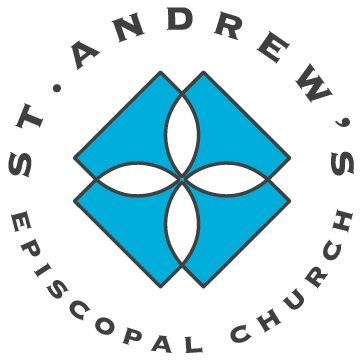Sunday, August 4, 2024
/Proper 13 (Year B)
Exodus 16:2-4,9-15; Psalm 78:23-29; Ephesians 4:1-16; John 6:24-35
The Rev. Clint Brown
“The gifts he gave were that some would be apostles, some prophets, some evangelists, some pastors and teachers, to equip the saints for the work of ministry, for building up the body of Christ” (Ephesians 4:11-12). Not too long ago, the church celebrated the feast day of St. James the Apostle (July 25), and I thought we might take this scripture at its word and look at the life of St. James and what we might learn from his example. Saint James the Apostle is the James of the famous trio, “Peter, James, and John,” that we hear mentioned so often in the Gospel stories. He was a personal witness to the Transfiguration, the raising of Jairus’ daughter, and of Jesus’s agony in the Garden of Gethsemane before his crucifixion. James and his brother John were fishermen, the sons of a man named Zebedee, and they were among the very first to join Jesus’s band of followers. They were also, apparently, rather impulsive and hot-headed, for Jesus gave them a nickname, “Boanerges,” which means “sons of thunder.” Evidence of their impetuosity is provided by Mark who mentions their extraordinary request to sit at the positions of honor on either side of Jesus when he came into his glory (Mark 10:35-40). In response, Jesus tells the brothers that they will indeed drink the cup that he is to drink and be baptized with the baptism with which he will be baptized, meaning, of course, that they, like him, are to be killed for their convictions. This came true for James in the year 44 when he became the first of the Twelve to suffer martyrdom. In that year, King Herod Agrippa, to make a show of strength for the Romans and to please the Jewish leaders, rounded up several members of the church and had them all executed. James was stabbed to death with a sword (Acts 12:1-2).
But that is not the end of the story of St. James, for his afterlife is at least as compelling as his earthly life. According to an old tradition, after his execution his body was taken from Jerusalem to a city in Spain called Compostela, and, in time, the shrine holding his bones became one of the three great pilgrimage sites of the Middle Ages. There were stories of miracles happening there and not just ordinary people, but kings, princes, and popes made the journey to Compostela to pay their respects to the saint and to make their petitions. The pilgrim routes leading to Compostela extended all across Europe in every direction, even as far as Russia and Scandinavia, and, yes, even today you can follow in their footsteps. Many people find themselves drawn to the idea of pilgrimage still and follow those same ancient footpaths to see St. James for themselves and to find spiritual meaning in the effort.
This idea of pilgrimage is a reminder that life itself is a road, and the most important thing about a road is its end, where it goes. If the road of life has no real end or goal, it is meaningless – it is a circle or a swamp or a wilderness, not a road – but, as Christians, we do not accept this bleak outlook. We do not believe in a meaningless existence or the idea of an accidental universe in which we are just complicated bunches of atoms that have come from nothing and return to nothing. For us, this is not the most convincing explanation of reality. We believe there is something more. We believe that life is a road, and a road has a destination.
A road got you to church this morning. It had to start with an intention – you had to decide you wanted to come – and then you had to take a step out of your front door to bring that intention to life. From where you started at your front door to here, you can, as it were, trace a line. There have been many such lines in your life. Some journeys have been clearly mapped out for you, such as the transition from school to working life or youthful dependent to tax-paying adult, but we all know that the road of life is rarely that straightforward or clearly marked. Life has been made interesting – and unnerving – not by its predictability but by its surprises and twists and turns. But what has unified it all, in all its apparent disorder, is intention. You have intended to live the best life possible. You have intended to live out of certain values and convictions and to make real certain hopes and dreams. There has been an aim. One must always have a destination in mind, even if, for the moment, it’s to stumble around before a clear one emerges. As William James wrote: “It is the ending that is fixed; the path may be modified indefinitely.”
I’ll leave you with one other image and that is of a lighthouse. No matter how dark or stormy or how far the wind might blow you off course, the light of the lighthouse remains fixed. You can keep turning the prow of your ship toward it and keep moving in its direction and soon you will find yourself coming into the harbor. No matter how zig zag the course or the number of course corrections it may take, as long as you are fixed on that one point of light, you will eventually find yourself coming to a safe harbor. Jesus is the lighthouse. Jesus is the harbor. If life is a road, make sure Jesus Christ is its destination. Amen.

